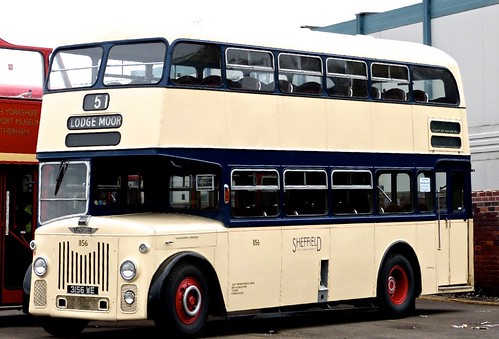For part 1 see blog posted 24/12/2020, part 2 posted 25/12/2020, part 3 posted 26/12/2020.
On the 12th. of May 2013. ‘First South Yorkshire’ (FSY) organised a bus event to mark 100 years since the introduction of the motor bus in Sheffield.
It was held at ‘FSYs Olive Grove garage which is adjacent to the
‘Midland Main Line’ about half a mile to the South of Sheffield’s railway station.
A stones throw from the garage is the site of what was Queens Road tram depot where many of Sheffields trams were built and housed.
What is now the bus parking area at Olive Grove for many years was home to
‘Sheffield United Tours’ fleet of luxury coaches which eventually passed to ‘National Travel East’.
A part of Sheffield then that is steeped in the city’s transport history.
This blog deals exclusively with buses of my generation. The blue and cream fleet.
Most of these buses have been illustrated in my blogs in the past but they were there on the day so I make no apology for including them again.
It is interesting to note that at the time of writing ‘FSY’ are experimenting with re-introducing elements of blue and cream to the current fleet.
Google BD12 TCO to see an example or see page 12 in ‘Buses’ magazine for December 2020.
Sheffield operated 3 ‘fleets’ all in the blue and cream livery.
The ‘A’ fleet were vehicles owned by ‘Sheffield Corporation Transport’ and operated within the city boundary.
The ‘B’ fleet were vehicles that were jointly owned by ‘Sheffield Corporation Transport’ and ‘British Railways’ and operated from Sheffield to destinations outside the Sheffield boundary but that were considered ‘local’ ie the routes to Bakewell and other Peak District destinations.
The ‘C’ fleet that was wholly owned by ‘British Railways’ (BR) and used on longer distance services e.g. Manchester, Leeds, Gainsborough etc.
Prior to 1948 the ‘Railway’ holdings were held by the LMS and/or the LNER and passed to BR at nationalisation.
7874 WJ ‘Sheffield Transport’ No. 874. AEC Regent 5 / Alexander
on Dennis Basford’s railsroadsrunways.blogspot.co.uk’
New in 1960.
The ‘A’ under the fleet number identifying the bus as an ‘A’ fleet vehicle.
OWE 271K ‘Sheffield Transport’ No. 271. Bristol VRT / East Lancs
on Dennis Basford’s railsroadsrunways.blogspot.co.uk’
3156 WE ‘Sheffield Joint Omnibus Commitee’ No. 1156. Leyland PD2 / Roe
on Dennis Basford’s railsroadsrunways.blogspot.co.uk’
New in 1958.
657 BWB ‘Sheffield Joint Omnibus Commitee’ No. 1357. Leyland Atlantean PDR1 / Park Royal
on Dennis Basford’s railsroadsrunways.blogspot.co.uk’
New in 1962 with a Weymann body but re-bodied in 1966 by Park Royal after fire damage. Surely, one of the most attractive and elegant of double deck bus designs ever.
‘Matchbox’ toys issued aa replica of this particular body style complete with the ‘Sheffield’ style of destination display.





No comments:
Post a Comment